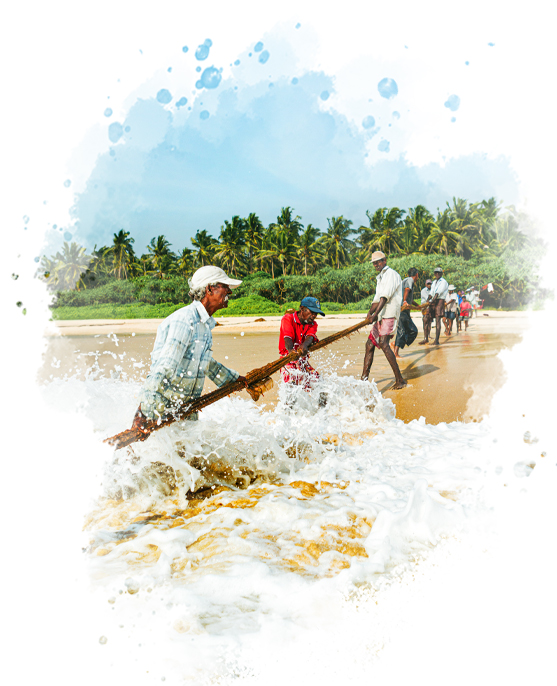
Monthly Weather in Sri Lanka
Experience Sri Lanka—a sun-kissed land of eternal summers, where warm and humid weather lasts all year round, setting the scene for an unforgettable island adventure in the tropics.
With frequent sunshine and seasonal wet spells, the island boasts perfect weather that is influenced by two monsoon seasons. The southwest monsoon, which extends from May to September, brings a torrential downpour from the Indian Ocean to the southern and western parts of the country. On the other hand, the somewhat weaker northeast monsoon is triggered by the winds which blow from the Bay of Bengal, causing rainfall in the north and the east from December to February.
Generally, the coastal lowlands experience warm temperatures of 27°C (80.6°F) and above, which gives travellers an opportunity to soak up the sun and bask in the midday heat by the beach. On the other hand, the central highlands promise crisp weather with an average temperature of 16°C (60.8°F) that is ideal for unwinding in the evergreen hill country.
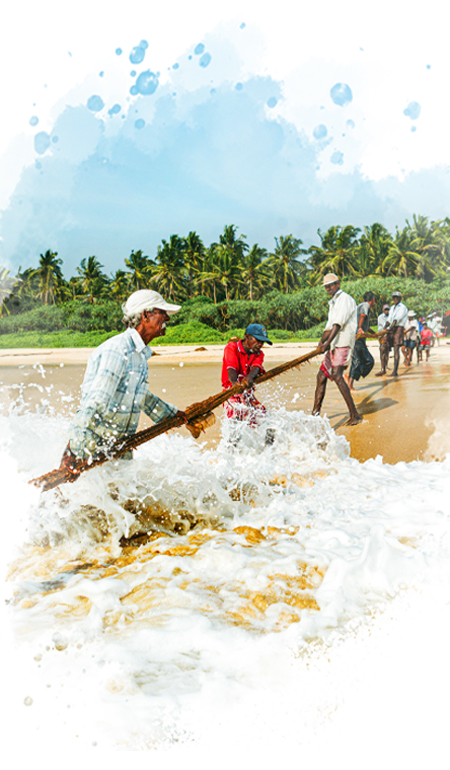
Monthly Weather in Sri Lanka
Experience Sri Lanka—a sun-kissed land of eternal summers, where warm and humid weather lasts all year round, setting the scene for an unforgettable island adventure in the tropics.
With frequent sunshine and seasonal wet spells, the island boasts perfect weather that is influenced by two monsoon seasons. The southwest monsoon, which extends from May to September, brings a torrential downpour from the Indian Ocean to the southern and western parts of the country. On the other hand, the somewhat weaker northeast monsoon is triggered by the winds which blow from the Bay of Bengal, causing rainfall in the north and the east from December to February.
Generally, the coastal lowlands experience warm temperatures of 27°C (80.6°F) and above, which gives travellers an opportunity to soak up the sun and bask in the midday heat by the beach. On the other hand, the central highlands promise crisp weather with an average temperature of 16°C (60.8°F) that is ideal for unwinding in the evergreen hill country.
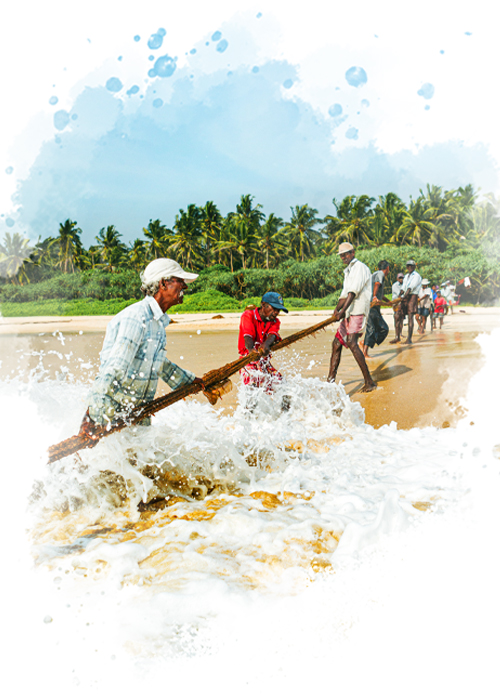
Monthly Weather in Sri Lanka
Experience Sri Lanka—a sun-kissed land of eternal summers, where warm and humid weather lasts all year round, setting the scene for an unforgettable island adventure in the tropics.
With frequent sunshine and seasonal wet spells, the island boasts perfect weather that is influenced by two monsoon seasons. The southwest monsoon, which extends from May to September, brings a torrential downpour from the Indian Ocean to the southern and western parts of the country. On the other hand, the somewhat weaker northeast monsoon is triggered by the winds which blow from the Bay of Bengal, causing rainfall in the north and the east from December to February.
Generally, the coastal lowlands experience warm temperatures of 27°C (80.6°F) and above, which gives travellers an opportunity to soak up the sun and bask in the midday heat by the beach. On the other hand, the central highlands promise crisp weather with an average temperature of 16°C (60.8°F) that is ideal for unwinding in the evergreen hill country.
When to Visit Sri Lanka
The best time to visit Sri Lanka is from mid-December to mid-April, as this is when the southern and western parts of the country experience cloudless skies and bright sunshine. Alternatively, the period which extends from July to September is also ideal for tours since it promises perfect weather in the north and the east. For a detailed breakdown of the monthly weather in Sri Lanka, you may refer to the weather summaries provided below.
When to Visit Sri Lanka
The best time to visit Sri Lanka is from mid-December to mid-April, as this is when the southern and western parts of the country experience cloudless skies and bright sunshine. Alternatively, the period which extends from July to September is also ideal for tours since it promises perfect weather in the north and the east.
For a detailed breakdown of the monthly weather in Sri Lanka, you may refer to the weather summaries provided below.

Weather in January
Clear skies, crisp weather and regular sunlight combine to offer a refreshing start to the new calendar year in Sri Lanka, marking the peak of the tourist season in January.
Not only is January one of the coolest months of the year, but it is also when the country’s humidity dips to an all-time low, ensuring perfect weather in time for the Hindu community to celebrate Thai Pongal. Visitors will have an opportunity to tour the cultural triangle and central highlands, along with the south and the west during their stay. On the other hand, it is recommended to avoid the northeast region due to heavy rainfall.
The daytime temperatures in the coastal lowlands range from 23°C to 31 °C (73.4°F to 87.8°F), whereas the central highlands experience temperatures as low as 10°C (50°F).

Weather in January
Clear skies, crisp weather and regular sunlight combine to offer a refreshing start to the new calendar year in Sri Lanka, marking the peak of the tourist season in January.
Not only is January one of the coolest months of the year, but it is also when the country’s humidity dips to an all-time low, ensuring perfect weather in time for the Hindu community to celebrate Thai Pongal. Visitors will have an opportunity to tour the cultural triangle and central highlands, along with the south and the west during their stay. On the other hand, it is recommended to avoid the northeast region due to heavy rainfall.
The daytime temperatures in the coastal lowlands range from 23°C to 31 °C (73.4°F to 87.8°F), whereas the central highlands experience temperatures as low as 10°C (50°F).

Weather in January
Clear skies, crisp weather and regular sunlight combine to offer a refreshing start to the new calendar year in Sri Lanka, marking the peak of the tourist season in January.
Not only is January one of the coolest months of the year, but it is also when the country’s humidity dips to an all-time low, ensuring perfect weather in time for the Hindu community to celebrate Thai Pongal. Visitors will have an opportunity to tour the cultural triangle and central highlands, along with the south and the west during their stay. On the other hand, it is recommended to avoid the northeast region due to heavy rainfall.
The daytime temperatures in the coastal lowlands range from 23°C to 31 °C (73.4°F to 87.8°F), whereas the central highlands experience temperatures as low as 10°C (50°F).
Weather in February
Although February is a short month, it promises bright sunshine and azure skies, as well as a slight increase in overall temperatures in most parts of the island.
As a part of the tourist season, February welcomes throngs of travellers from across the globe. With Independence Day celebrations underway in Colombo, many pay a visit to the cultural triangle and central highlands, as well as the southern and western parts of the country. In the meantime, the turbulent weather in the north fades away, but the east coast remains affected by heavy rainfall.
The temperatures in the coastal lowlands fluctuate between 24°C and 32°C (75.2°F and 89.6°F), ultimately making February a warmer choice than January. However, cool temperatures which range from 10°C to 21°C (50°F to 69.8°F) persist in the central highlands.
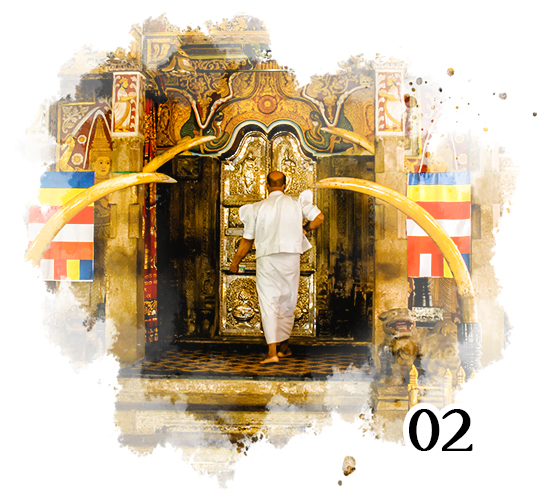

Weather in February
Although February is a short month, it promises bright sunshine and azure skies, as well as a slight increase in overall temperatures in most parts of the island.
As a part of the tourist season, February welcomes throngs of travellers from across the globe. With Independence Day celebrations underway in Colombo, many pay a visit to the cultural triangle and central highlands, as well as the southern and western parts of the country. In the meantime, the turbulent weather in the north fades away, but the east coast remains affected by heavy rainfall.
The temperatures in the coastal lowlands fluctuate between 24°C and 32°C (75.2°F and 89.6°F), ultimately making February a warmer choice than January. However, cool temperatures which range from 10°C to 21°C (50°F to 69.8°F) persist in the central highlands.
Weather in February
Although February is a short month, it promises bright sunshine and azure skies, as well as a slight increase in overall temperatures in most parts of the island.
As a part of the tourist season, February welcomes throngs of travellers from across the globe. With Independence Day celebrations underway in Colombo, many pay a visit to the cultural triangle and central highlands, as well as the southern and western parts of the country. In the meantime, the turbulent weather in the north fades away, but the east coast remains affected by heavy rainfall.
The temperatures in the coastal lowlands fluctuate between 24°C and 32°C (75.2°F and 89.6°F), ultimately making February a warmer choice than January. However, cool temperatures which range from 10°C to 21°C (50°F to 69.8°F) persist in the central highlands.
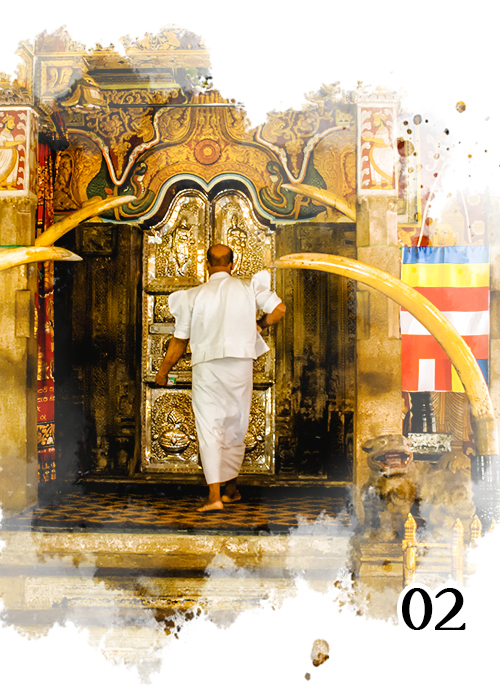
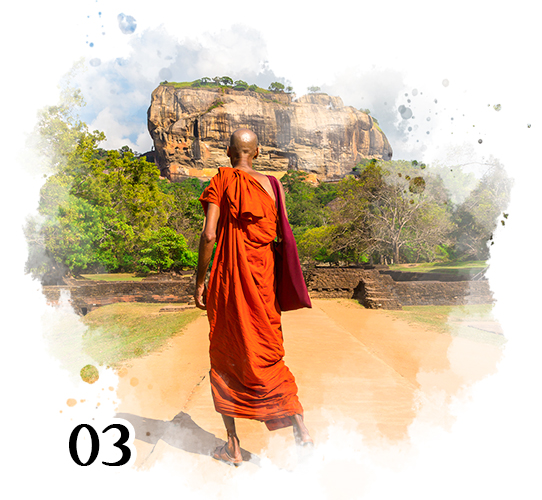
Weather in March
With its balmy weather and sun-kissed landscapes, March provides a leisurely atmosphere with dwindling crowds of tourists, making it an ideal time to tour the island undisturbed.
A period of clear weather in nearly all parts of Sri Lanka marks the start of March, which is when the Hindu community enjoys a peaceful celebration of Maha Shivaratri. While steering clear of the turbulent weather in the east coast, travellers may drop by the cultural triangle, central highlands, and the vibrant cities of the north, south and west to uncover the country’s rich history under clear skies.
The coastal lowlands teeter between temperatures of 25°C and 32°C (77°F and 89.6°F) in March, whereas the temperatures in Nuwara Eliya and other parts of the hill country range from 11°C to 22°C (51.8°F to 71.6°F).

Weather in March
With its balmy weather and sun-kissed landscapes, March provides a leisurely atmosphere with dwindling crowds of tourists, making it an ideal time to tour the island undisturbed.
A period of clear weather in nearly all parts of Sri Lanka marks the start of March, which is when the Hindu community enjoys a peaceful celebration of Maha Shivaratri. While steering clear of the turbulent weather in the east coast, travellers may drop by the cultural triangle, central highlands, and the vibrant cities of the north, south and west to uncover the country’s rich history under clear skies.
The coastal lowlands teeter between temperatures of 25°C and 32°C (77°F and 89.6°F) in March, whereas the temperatures in Nuwara Eliya and other parts of the hill country range from 11°C to 22°C (51.8°F to 71.6°F).
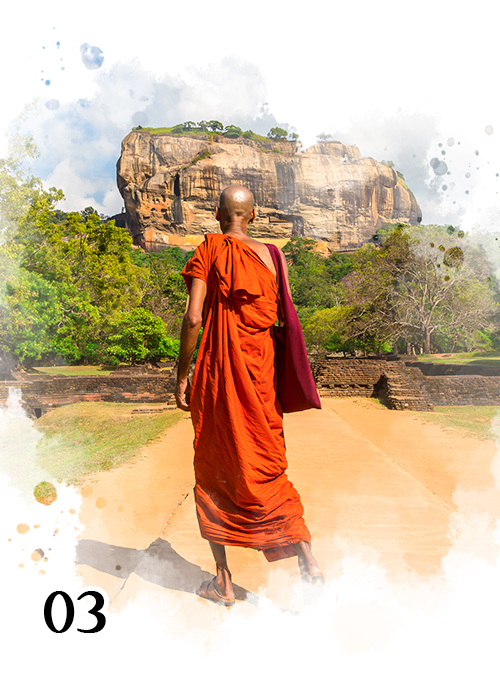
Weather in March
With its balmy weather and sun-kissed landscapes, March provides a leisurely atmosphere with dwindling crowds of tourists, making it an ideal time to tour the island undisturbed.
A period of clear weather in nearly all parts of Sri Lanka marks the start of March, which is when the Hindu community enjoys a peaceful celebration of Maha Shivaratri. While steering clear of the turbulent weather in the east coast, travellers may drop by the cultural triangle, central highlands, and the vibrant cities of the north, south and west to uncover the country’s rich history under clear skies.
The coastal lowlands teeter between temperatures of 25°C and 32°C (77°F and 89.6°F) in March, whereas the temperatures in Nuwara Eliya and other parts of the hill country range from 11°C to 22°C (51.8°F to 71.6°F).
Weather in April
Amidst displays of culture during the Sri Lankan New Year, early April promises pleasant weather in most parts of Sri Lanka while its latter half commences with a wet spell.
Azure skies and strong sunshine combine in early April, resulting in a popular time for travellers to tour the south and the west. The tourist season then draws to a close by mid-April, ushering in the new year celebrations before the island experiences more rainfall. All itineraries tend to focus on the balmy cultural triangle, east coast and the north for the latter half of the month.
The temperatures in the coastal lowlands range from 23°C to 31 °C (73.4°F to 87.8°F), making April one of the hottest months of the year, whereas the central highlands guarantee temperatures as low as 12°C (53.6°F).
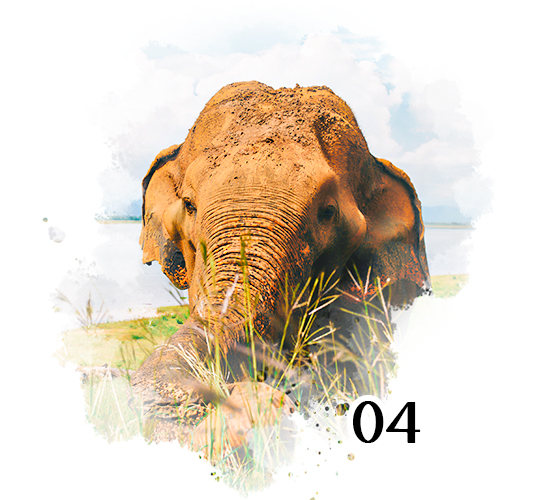

Weather in April
Amidst displays of culture during the Sri Lankan New Year, early April promises pleasant weather in most parts of Sri Lanka while its latter half commences with a wet spell.
Azure skies and strong sunshine combine in early April, resulting in a popular time for travellers to tour the south and the west. The tourist season then draws to a close by mid-April, ushering in the new year celebrations before the island experiences more rainfall. All itineraries tend to focus on the balmy cultural triangle, east coast and the north for the latter half of the month.
The temperatures in the coastal lowlands range from 23°C to 31 °C (73.4°F to 87.8°F), making April one of the hottest months of the year, whereas the central highlands guarantee temperatures as low as 12°C (53.6°F).
Weather in April
Amidst displays of culture during the Sri Lankan New Year, early April promises pleasant weather in most parts of Sri Lanka while its latter half commences with a wet spell.
Azure skies and strong sunshine combine in early April, resulting in a popular time for travellers to tour the south and the west. The tourist season then draws to a close by mid-April, ushering in the new year celebrations before the island experiences more rainfall. All itineraries tend to focus on the balmy cultural triangle, east coast and the north for the latter half of the month.
The temperatures in the coastal lowlands range from 23°C to 31 °C (73.4°F to 87.8°F), making April one of the hottest months of the year, whereas the central highlands guarantee temperatures as low as 12°C (53.6°F).
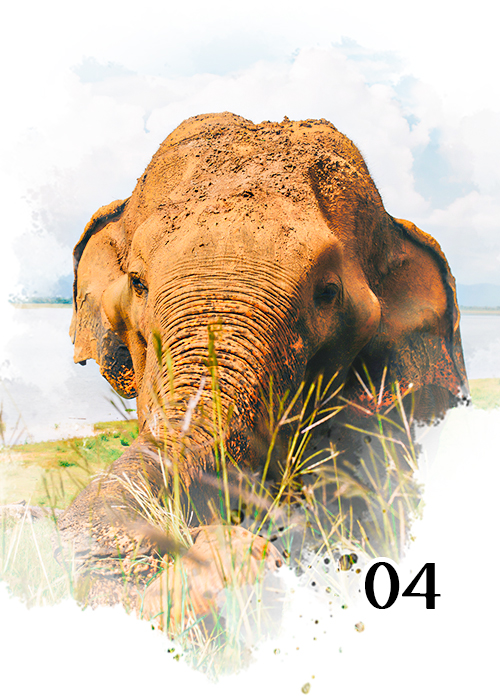
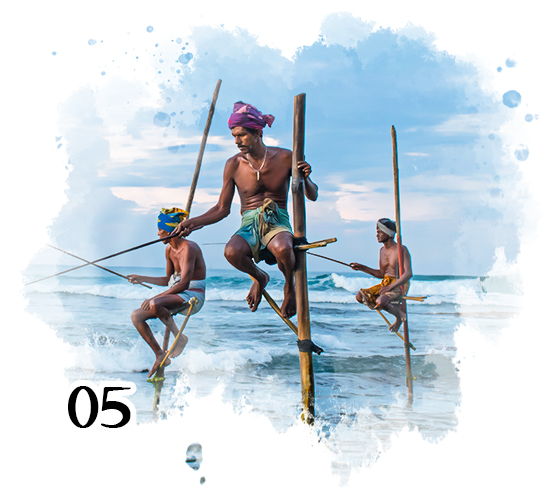
Weather in May
Overcast skies and wet spells signal the start of the southwest monsoon in May, which affects most parts of the isle except for the north and the east, where fair weather is guaranteed.
Despite the high risk of rain showers in May, handcrafted lanterns adorn the streets for the Vesak festival that is celebrated island-wide. Travellers may take this opportunity to admire the decorations and enjoy the festivities while touring the cultural triangle, east coast, and the north, as these regions are the least likely to be affected by the rains.
Since the heat in April is carried over to May, the temperatures in the coastal lowlands range from 26°C to 35 °C (78.8°F to 95°F). Similarly, the central highlands experience significantly warmer temperatures between 21°C and 28°C (69.8°F and 82.4°F).

Weather in May
Overcast skies and wet spells signal the start of the southwest monsoon in May, which affects most parts of the isle except for the north and the east, where fair weather is guaranteed.
Despite the high risk of rain showers in May, handcrafted lanterns adorn the streets for the Vesak festival that is celebrated island-wide. Travellers may take this opportunity to admire the decorations and enjoy the festivities while touring the cultural triangle, east coast, and the north, as these regions are the least likely to be affected by the rains.
Since the heat in April is carried over to May, the temperatures in the coastal lowlands range from 26°C to 35 °C (78.8°F to 95°F). Similarly, the central highlands experience significantly warmer temperatures between 21°C and 28°C (69.8°F and 82.4°F).
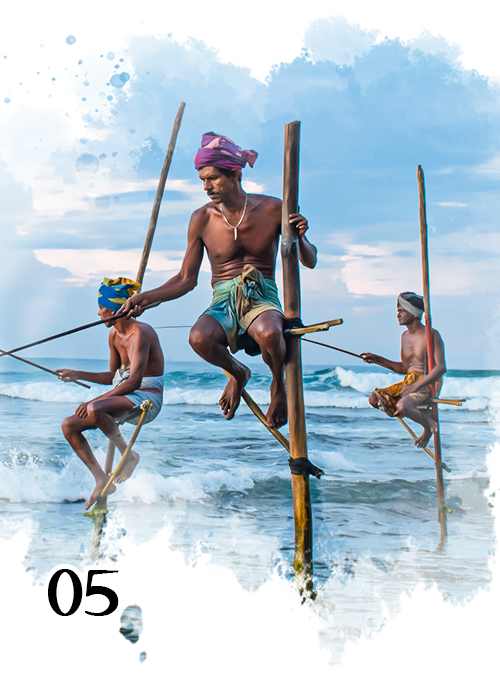
Weather in May
Overcast skies and wet spells signal the start of the southwest monsoon in May, which affects most parts of the isle except for the north and the east, where fair weather is guaranteed.
Despite the high risk of rain showers in May, handcrafted lanterns adorn the streets for the Vesak festival that is celebrated island-wide. Travellers may take this opportunity to admire the decorations and enjoy the festivities while touring the cultural triangle, east coast, and the north, as these regions are the least likely to be affected by the rains.
Since the heat in April is carried over to May, the temperatures in the coastal lowlands range from 26°C to 35 °C (78.8°F to 95°F). Similarly, the central highlands experience significantly warmer temperatures between 21°C and 28°C (69.8°F and 82.4°F).
Weather in June
June commences with severe rainfall in the southern and western parts of Sri Lanka, but this wet spell fades away in the latter half, giving way to pleasant weather throughout the island.
With its somewhat gloomy skies and occasional sunlight, June is not regarded as a desirable month for travel. However, the few tourists that remain in the country can indulge in the local cuisine that is distributed for free during the Poson Poya festival. They may also venture to the cultural triangle, east coast, and the north for better weather conditions and enjoy the major attractions minus the crowds.
Generally, the temperatures in the coastal lowlands fluctuate between 29°C and 35°C (84.2°F and 95°F), whereas the temperatures in the central highlands teeter between 19°C to 25°C (66.2°F to 77°F).


Weather in June
June commences with severe rainfall in the southern and western parts of Sri Lanka, but this wet spell fades away in the latter half, giving way to pleasant weather throughout the island.
With its somewhat gloomy skies and occasional sunlight, June is not regarded as a desirable month for travel. However, the few tourists that remain in the country can indulge in the local cuisine that is distributed for free during the Poson Poya festival. They may also venture to the cultural triangle, east coast, and the north for better weather conditions and enjoy the major attractions minus the crowds.
Generally, the temperatures in the coastal lowlands fluctuate between 29°C and 35°C (84.2°F and 95°F), whereas the temperatures in the central highlands teeter between 19°C to 25°C (66.2°F to 77°F).
Weather in June
June commences with severe rainfall in the southern and western parts of Sri Lanka, but this wet spell fades away in the latter half, giving way to pleasant weather throughout the island.
With its somewhat gloomy skies and occasional sunlight, June is not regarded as a desirable month for travel. However, the few tourists that remain in the country can indulge in the local cuisine that is distributed for free during the Poson Poya festival. They may also venture to the cultural triangle, east coast, and the north for better weather conditions and enjoy the major attractions minus the crowds.
Generally, the temperatures in the coastal lowlands fluctuate between 29°C and 35°C (84.2°F and 95°F), whereas the temperatures in the central highlands teeter between 19°C to 25°C (66.2°F to 77°F).

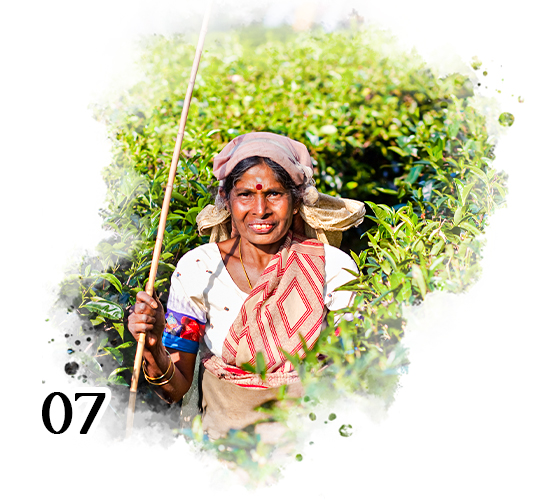
Weather in July
Cloudless skies and bright sunshine announce the long-awaited arrival of July, which is when the heat drops and the lingering monsoon winds cause mild rainfall in the southwest.
As the start of the island’s second tourist season, July welcomes travellers from across the globe and lets them experience great weather in the cultural triangle, central highlands, and the north, along with fantastic surfing conditions on the east coast. And, although they are unable to visit the rainy cities in the southwest, they can embark on a jeep safari at the Minneriya National Park to witness herds of elephants in the wild instead.
The coastal lowlands are tolerably hot in July with an average temperature of 30°C (86°F). Meanwhile, the central highlands experience crisp weather with an average temperature of 19°C (66.2°F).

Weather in July
Cloudless skies and bright sunshine announce the long-awaited arrival of July, which is when the heat drops and the lingering monsoon winds cause mild rainfall in the southwest.
As the start of the island’s second tourist season, July welcomes travellers from across the globe and lets them experience great weather in the cultural triangle, central highlands, and the north, along with fantastic surfing conditions on the east coast. And, although they are unable to visit the rainy cities in the southwest, they can embark on a jeep safari at the Minneriya National Park to witness herds of elephants in the wild instead.
The coastal lowlands are tolerably hot in July with an average temperature of 30°C (86°F). Meanwhile, the central highlands experience crisp weather with an average temperature of 19°C (66.2°F).
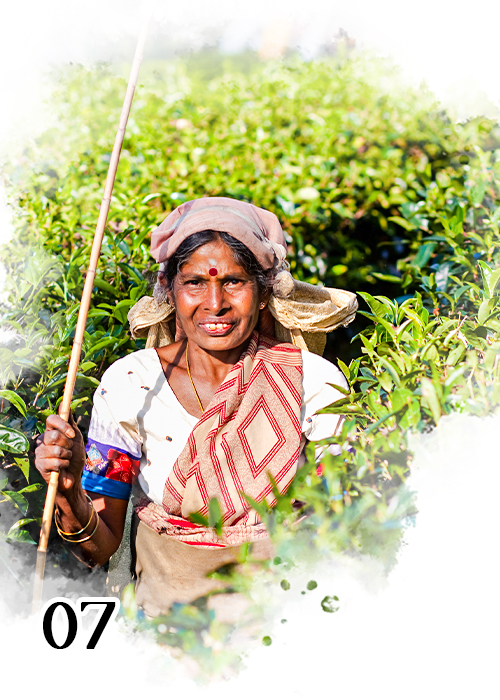
Weather in July
Cloudless skies and bright sunshine announce the long-awaited arrival of July, which is when the heat drops and the lingering monsoon winds cause mild rainfall in the southwest.
As the start of the island’s second tourist season, July welcomes travellers from across the globe and lets them experience great weather in the cultural triangle, central highlands, and the north, along with fantastic surfing conditions on the east coast. And, although they are unable to visit the rainy cities in the southwest, they can embark on a jeep safari at the Minneriya National Park to witness herds of elephants in the wild instead.
The coastal lowlands are tolerably hot in July with an average temperature of 30°C (86°F). Meanwhile, the central highlands experience crisp weather with an average temperature of 19°C (66.2°F).
Weather in August
Daytime temperatures surge to a record high in August, but although it is extremely hot, the pleasant weather and faint breeze that accompanies the midday heat makes this month ideal for touring the isle.
Not only is August the sunniest month of the year, but it is also a busy time for the Buddhist community since preparations are underway for the Kandy Esala Perahera, during which the sacred tooth relic is carried through the streets. Similarly, while avoiding the southwest regions due to the rains, tourists busy themselves with visits to the cultural triangle, central highlands, east coast, and the north.
The temperatures in the coastal lowlands range from 30°C to 35 °C (86°F to 95°F), whereas the central highlands experience warmer temperatures between 19°C to 25°C (66.2°F to 77°F).
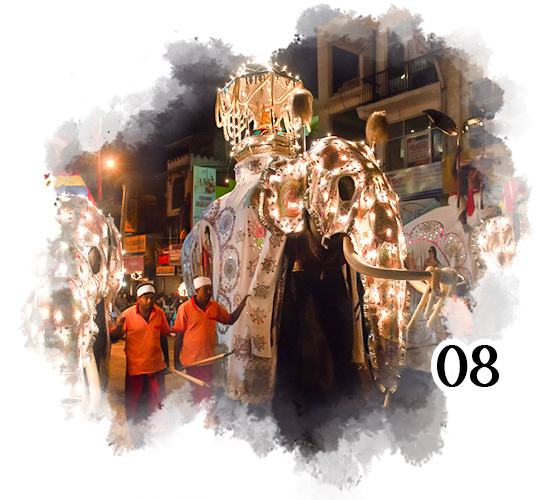

Weather in August
Daytime temperatures surge to a record high in August, but although it is extremely hot, the pleasant weather and faint breeze that accompanies the midday heat makes this month ideal for touring the isle.
Not only is August the sunniest month of the year, but it is also a busy time for the Buddhist community since preparations are underway for the Kandy Esala Perahera, during which the sacred tooth relic is carried through the streets. Similarly, while avoiding the southwest regions due to the rains, tourists busy themselves with visits to the cultural triangle, central highlands, east coast, and the north.
The temperatures in the coastal lowlands range from 30°C to 35 °C (86°F to 95°F), whereas the central highlands experience warmer temperatures between 19°C to 25°C (66.2°F to 77°F).
Weather in August
Daytime temperatures surge to a record high in August, but although it is extremely hot, the pleasant weather and faint breeze that accompanies the midday heat makes this month ideal for touring the isle.
Not only is August the sunniest month of the year, but it is also a busy time for the Buddhist community since preparations are underway for the Kandy Esala Perahera, during which the sacred tooth relic is carried through the streets. Similarly, while avoiding the southwest regions due to the rains, tourists busy themselves with visits to the cultural triangle, central highlands, east coast, and the north.
The temperatures in the coastal lowlands range from 30°C to 35 °C (86°F to 95°F), whereas the central highlands experience warmer temperatures between 19°C to 25°C (66.2°F to 77°F).
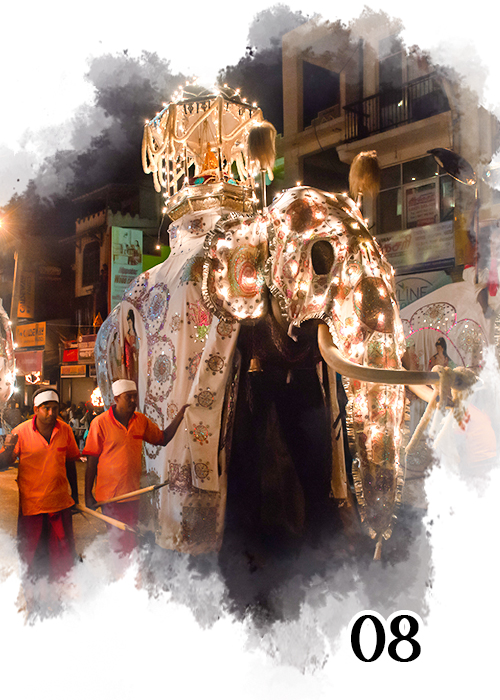
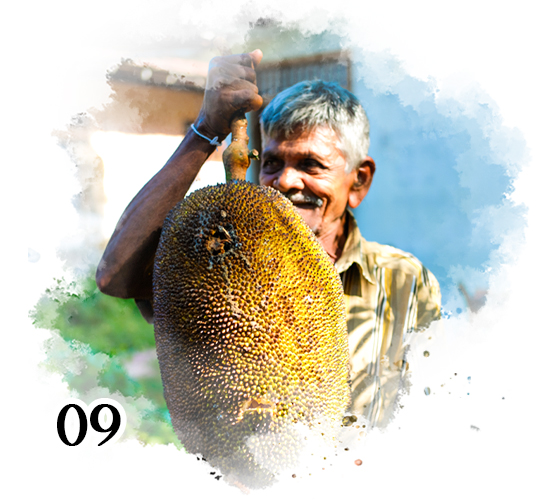
Weather in September
The sunlight from August is carried over to early September, where fair weather is experienced island-wide. However, wet spells resume in certain regions during the latter half of the month.
September commences with pleasant weather, making it possible to tour the entire country before the rains begin. However, by the second half of the month, turbulent weather becomes the norm in the south and the west, and so, travellers may only visit the cultural triangle, central highlands, east coast and the north. By then, most tourists have returned home, resulting in a laid-back atmosphere at most of the major attractions.
The daytime temperatures in September teeter between 29°C to 34 °C (84.2°F to 93.2°F) in the coastal lowlands, making it considerably hot. Meanwhile, the temperatures in the central highlands may dip to 19°C (66.2°F).

Weather in September
The sunlight from August is carried over to early September, where fair weather is experienced island-wide. However, wet spells resume in certain regions during the latter half of the month.
September commences with pleasant weather, making it possible to tour the entire country before the rains begin. However, by the second half of the month, turbulent weather becomes the norm in the south and the west, and so, travellers may only visit the cultural triangle, central highlands, east coast and the north. By then, most tourists have returned home, resulting in a laid-back atmosphere at most of the major attractions.
The daytime temperatures in September teeter between 29°C to 34 °C (84.2°F to 93.2°F) in the coastal lowlands, making it considerably hot. Meanwhile, the temperatures in the central highlands may dip to 19°C (66.2°F).
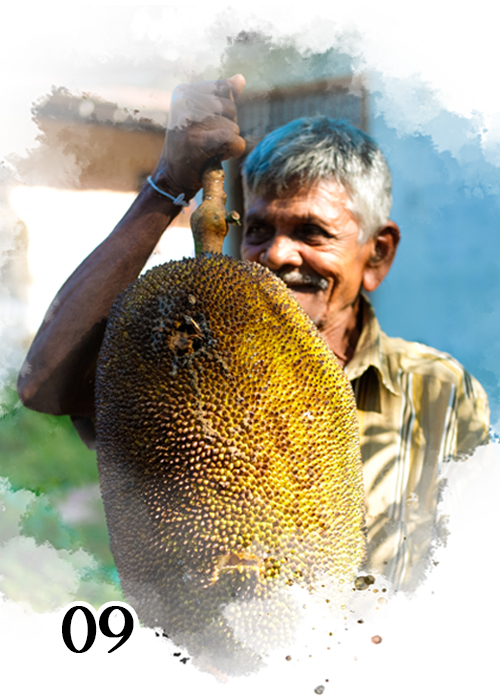
Weather in September
The sunlight from August is carried over to early September, where fair weather is experienced island-wide. However, wet spells resume in certain regions during the latter half of the month.
September commences with pleasant weather, making it possible to tour the entire country before the rains begin. However, by the second half of the month, turbulent weather becomes the norm in the south and the west, and so, travellers may only visit the cultural triangle, central highlands, east coast and the north. By then, most tourists have returned home, resulting in a laid-back atmosphere at most of the major attractions.
The daytime temperatures in September teeter between 29°C to 34 °C (84.2°F to 93.2°F) in the coastal lowlands, making it considerably hot. Meanwhile, the temperatures in the central highlands may dip to 19°C (66.2°F).
Weather in October
Although the first half of October promises decent weather, the second half marks the start of an inter-monsoon period where torrential downpours become a daily occurrence in every part of the country.
Such turbulent weather makes it difficult to recommend October for tours, especially since the weather takes a turn for the worse in the south and the west. To avoid this, tourists can pay a visit to the cultural triangle and enjoy the warm sunshine and calm waters of the east coast. They may also focus on excursions that are not affected by the rain, such as jeep safaris and a cultural show.
Typically, the daytime temperatures in the coastal lowlands range from 28°C to 32°C (82°F to 89.6°F), whereas the central highlands are somewhat warm, promising temperatures between 19°C and 26°C (66.2°F and 78.8°F).
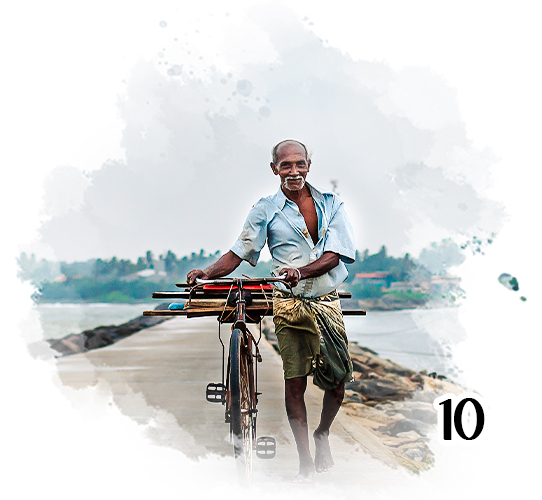

Weather in October
Although the first half of October promises decent weather, the second half marks the start of an inter-monsoon period where torrential downpours become a daily occurrence in every part of the country.
Such turbulent weather makes it difficult to recommend October for tours, especially since the weather takes a turn for the worse in the south and the west. To avoid this, tourists can pay a visit to the cultural triangle and enjoy the warm sunshine and calm waters of the east coast. They may also focus on excursions that are not affected by the rain, such as jeep safaris and a cultural show.
Typically, the daytime temperatures in the coastal lowlands range from 28°C to 32°C (82°F to 89.6°F), whereas the central highlands are somewhat warm, promising temperatures between 19°C and 26°C (66.2°F and 78.8°F).
Weather in October
Although the first half of October promises decent weather, the second half marks the start of an inter-monsoon period where torrential downpours become a daily occurrence in every part of the country.
Such turbulent weather makes it difficult to recommend October for tours, especially since the weather takes a turn for the worse in the south and the west. To avoid this, tourists can pay a visit to the cultural triangle and enjoy the warm sunshine and calm waters of the east coast. They may also focus on excursions that are not affected by the rain, such as jeep safaris and a cultural show.
Typically, the daytime temperatures in the coastal lowlands range from 28°C to 32°C (82°F to 89.6°F), whereas the central highlands are somewhat warm, promising temperatures between 19°C and 26°C (66.2°F and 78.8°F).
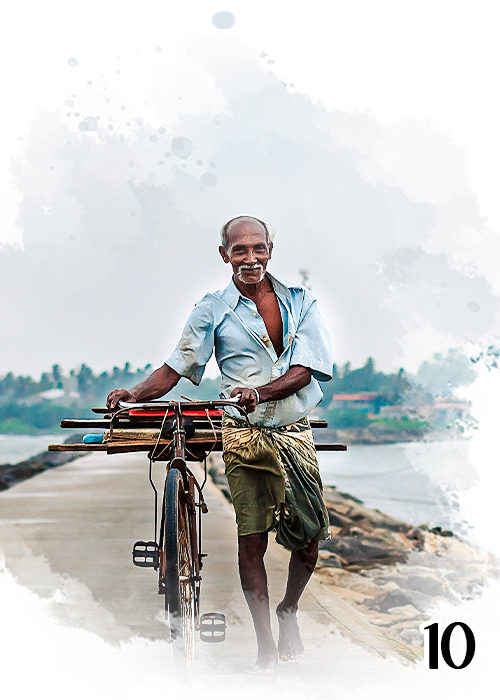
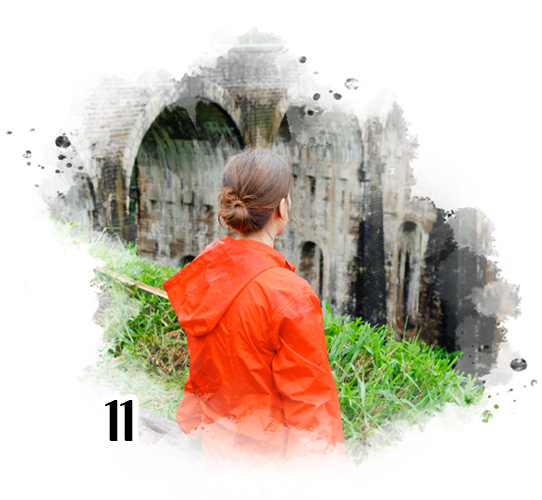
Weather in November
Unlike most other months, November teeters between heavy rainfall and warm sunshine, making it difficult to determine what the weather will be like until you set foot in Sri Lanka.
Generally, November is not recommended for tours due to the severe rains which occur throughout the isle on a daily basis, particularly in the afternoon and the evening. Since it is difficult to plan ahead, most travellers opt for culture-oriented tours which are not affected by the rainfall. They may visit the cultural triangle and journey to the national parks of the island, where they can admire the wildlife during a jeep safari.
November guarantees temperatures between 28°C and 32°C (82.4°F and 89.6°F) in the coastal lowlands. In the meantime, the temperatures in the central highlands range from 20°C to 26°C (68°F to 78.8°F).

Weather in November
Unlike most other months, November teeters between heavy rainfall and warm sunshine, making it difficult to determine what the weather will be like until you set foot in Sri Lanka.
Generally, November is not recommended for tours due to the severe rains which occur throughout the isle on a daily basis, particularly in the afternoon and the evening. Since it is difficult to plan ahead, most travellers opt for culture-oriented tours which are not affected by the rainfall. They may visit the cultural triangle and journey to the national parks of the island, where they can admire the wildlife during a jeep safari.
November guarantees temperatures between 28°C and 32°C (82.4°F and 89.6°F) in the coastal lowlands. In the meantime, the temperatures in the central highlands range from 20°C to 26°C (68°F to 78.8°F).
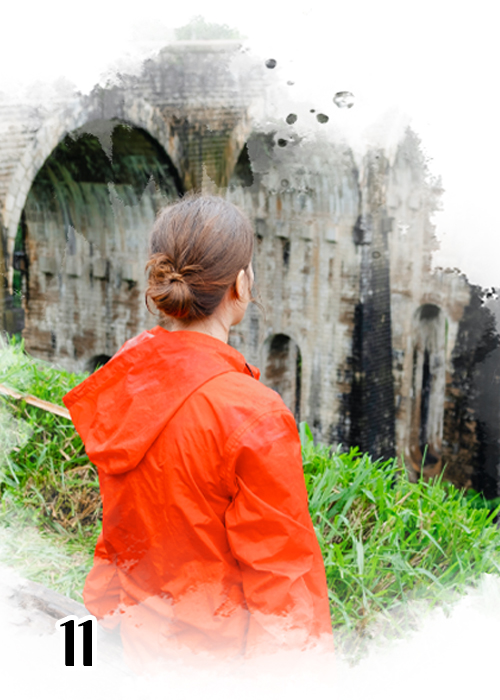
Weather in November
Unlike most other months, November teeters between heavy rainfall and warm sunshine, making it difficult to determine what the weather will be like until you set foot in Sri Lanka.
Generally, November is not recommended for tours due to the severe rains which occur throughout the isle on a daily basis, particularly in the afternoon and the evening. Since it is difficult to plan ahead, most travellers opt for culture-oriented tours which are not affected by the rainfall. They may visit the cultural triangle and journey to the national parks of the island, where they can admire the wildlife during a jeep safari.
November guarantees temperatures between 28°C and 32°C (82.4°F and 89.6°F) in the coastal lowlands. In the meantime, the temperatures in the central highlands range from 20°C to 26°C (68°F to 78.8°F).
Weather in December
December begins with persistent rainfall that fades as sunlight breaks through the clouds, giving way to perfect weather in the latter half of the month while signalling the start of the main tourist season.
As the locals embrace the holiday spirit, travellers are able to experience a magical Christmas in the sun. Once the rains cease by mid-December, tourists may participate in the local festivities and visit the commercial capital to admire the decorations. They can also travel to the cultural triangle, and central highlands, along with the southern and western regions.
Typically, the daytime temperatures in the coastal lowlands range from 27°C to 31°C (80.6°F to 87.8°F), making December one of the best months to visit the island. Alternatively, the central highlands are much cooler, promising temperatures between 17°C and 25°C (62.6°F and 77°F).
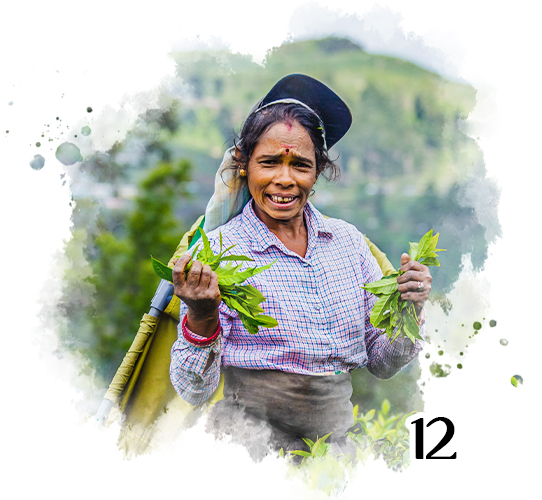

Weather in December
December begins with persistent rainfall that fades as sunlight breaks through the clouds, giving way to perfect weather in the latter half of the month while signalling the start of the main tourist season.
As the locals embrace the holiday spirit, travellers are able to experience a magical Christmas in the sun. Once the rains cease by mid-December, tourists may participate in the local festivities and visit the commercial capital to admire the decorations. They can also travel to the cultural triangle, and central highlands, along with the southern and western regions.
Typically, the daytime temperatures in the coastal lowlands range from 27°C to 31°C (80.6°F to 87.8°F), making December one of the best months to visit the island. Alternatively, the central highlands are much cooler, promising temperatures between 17°C and 25°C (62.6°F and 77°F).
Weather in December
December begins with persistent rainfall that fades as sunlight breaks through the clouds, giving way to perfect weather in the latter half of the month while signalling the start of the main tourist season.
As the locals embrace the holiday spirit, travellers are able to experience a magical Christmas in the sun. Once the rains cease by mid-December, tourists may participate in the local festivities and visit the commercial capital to admire the decorations. They can also travel to the cultural triangle, and central highlands, along with the southern and western regions.
Typically, the daytime temperatures in the coastal lowlands range from 27°C to 31°C (80.6°F to 87.8°F), making December one of the best months to visit the island. Alternatively, the central highlands are much cooler, promising temperatures between 17°C and 25°C (62.6°F and 77°F).
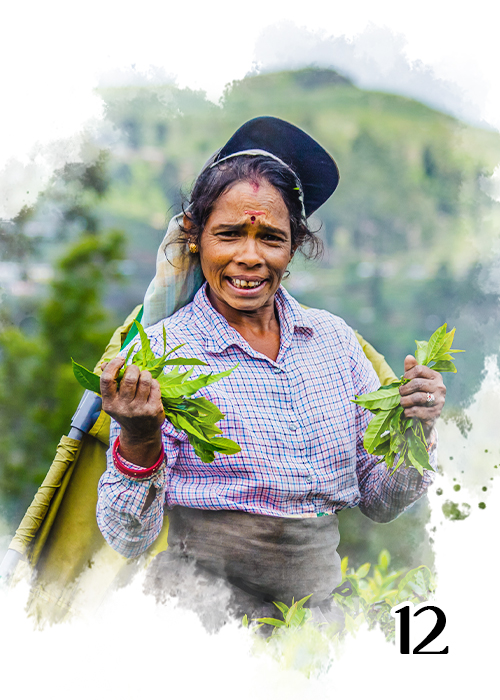
Need Help with the itinerary?
Would you like to get our assistance to plan your Sri Lanka itinerary? Drop us a message to get a free tailor-made itinerary that reflects your interests, budget, tour duration, and the weather conditions of the month that you travel.
Frequently Asked Questions
1. What type of weather is in Sri Lanka?
Due to its closeness to the equator, Sri Lanka’s climate is strictly tropical. In other words, the weather in Sri Lanka is warm and humid all year round, making it easy to work up a sweat when travelling on foot.
While the island does not experience spring, summer, autumn, and winter, it undergoes two seasons of wet spells instead, both of which are triggered by the monsoon winds. This has resulted in a regional divide where some parts of the island experience consecutive rainfall during certain months of the year, whereas the other areas remain warm and dry.
The only exception to this warm weather is the central highlands,where crisp weather and cooler temperatures can be experienced throughout the year.
2. What is the tourist season in Sri Lanka?
There are two tourist seasons in Sri Lanka: the first extends from mid-December to mid- April, and the second is between July and September. Coincidentally, the first tourist season occurs when the weather in the south and the west is at its best, whereas the second is when fair weather is guaranteed in the north and the east.
However, the most popular months among tourists are December, January, February, July, and August. It is during these five months that the country is at its busiest since throngs of tourists set off on different excursions to make the most of the cloudless skies, brilliant sunshine, and wonderful weather.
3. What is the rainy season in Sri Lanka?
Apart from the seasonal wet spells which affect the southwest and northeast regions alternatively, Sri Lanka also experiences an island-wide period of rainfall in October and November. Most tourists avoid visiting the country during these two months as the torrential downpours affect most cities, making it difficult to visit the major attractions while avoiding the rains.
That being said, it is generally recommended to prepare for mild rainfall before visiting the country even during its tourist season.
4. When is the surf season in Sri Lanka?
The surf season on the southwest coast of Sri Lanka extends from December to April, which is when areas such as Hikkaduwa and Weligama experience perfect weather, longer swells, and bigger waves, making them prime surfing destinations.
However, Arugam Bay, which is touted as one of the best surfing destinations in the world, guarantees optimal surfing conditions for beginners and pros alike only when it is visited between May and October.
5. What is the whale watching season in Sri Lanka?
Of the three whale watching locations in Sri Lanka, Mirissa is unarguably the best, and its whale watching season extends from November to April, which is when your chances of spotting blue whales, sperm whales and dolphins are high. Similarly, Kalpitiya offers plenty of dolphin sightings during this time.
On the other hand, whale watching season in Trincomalee begins in May and ends in October with guaranteed dolphin sightings and a slim chance of catching whales in action.
6. What is the best time of year to visit Sri Lanka for a beach stay?
The influence of the alternating monsoon seasons makes it possible to enjoy great weather by the beach on one part of the island even while the other coastal regions are experiencing heavy rainfall. However, the best time to visit Sri Lanka for a beach stay is between January and March, as well as from July to September.
If you are planning on touring the country in the period that extends from January to March, you can pick a beach on the southwest coast as your final stop. These beaches include Bentota, Hikkaduwa, Mirissa, Unawatuna, etc., where calm waters and hot sunlight are guaranteed during this time of the year.
On the other hand, if your visit to the isle is between July and September, it is best to choose a beach on the eastern coastal stretch. These beaches, which promise pristine shores, cerulean waters, and great weather, include Nilaveli, Trincomalee, and Pasikudah.
More Tips for Your Holiday

"We have had our amazing driver taking us around Sri Lanka with our 15 month old daughter for the last two weeks. Everything has been organized for us and everything has been perfect.Anyone thinking about going to Sri Lanka with their little ones should book with Travellers Isle. Nothing has been too much trouble for them. All hotels have been fabulous and our driver has been so helpful, amazing with our daughter, professional and knowledgeable."
